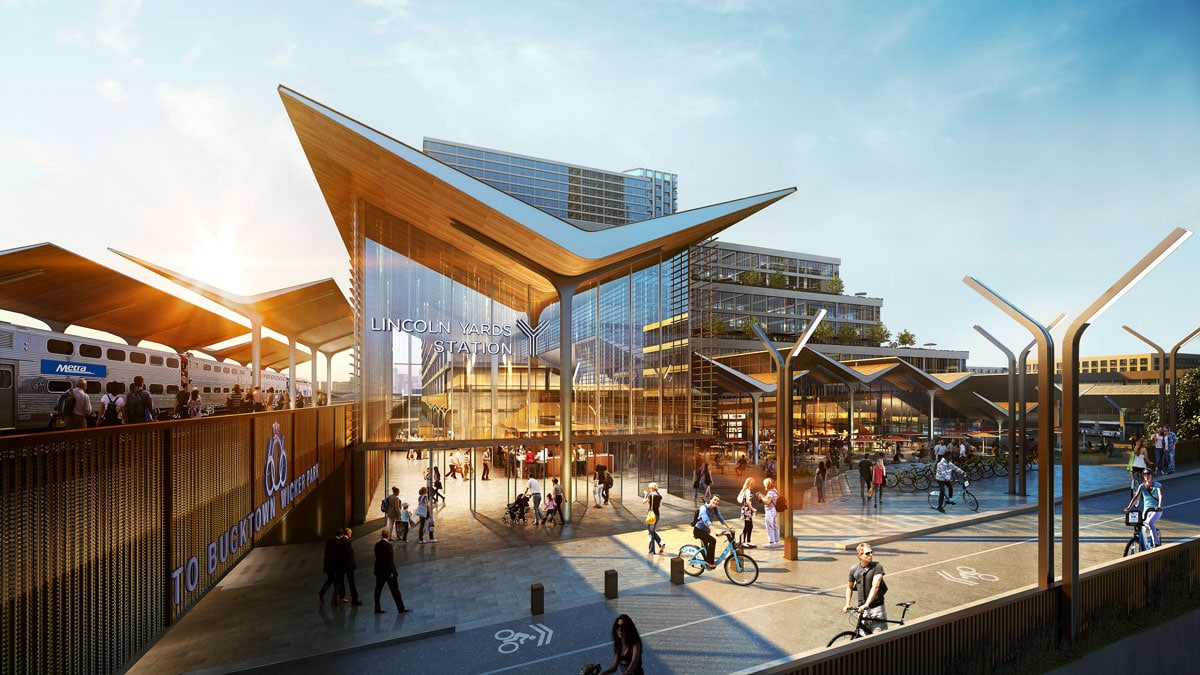
Chicago’s Lincoln Yards development will transform the riverfront near Lincoln Park and Bucktown with skyscrapers, a dog park, improved access to public transportation, 1 mile of new Riverwalk, and more than 13 acres of new public open space. [Rendering: Courtesy of SOM/Sterling Bay]
PROJECT: Lincoln Yards LOCATION: Chicago SIZE: 50+ acres COST: $5 Billion COMPLETION: 10-year Development Cycle DEVELOPER: Sterling Bay MASTER PLANNER: CBT/SOM LANDSCAPE ARCHITECT: James Corner Field Operations ENVIRONMENTAL ENGINEER: V3 Companies RIVERWALL ENGINEER: Collins Engineers TRAFFIC: KLOA & Kimley Horn MOBILITY: Nelson Nygaard
In Chicago, everyone’s talking about the new mega mixed-use development Lincoln Yards, which is set to transform more than 50 acres in the city over the next 10 years. The project is expected to not only convert brownfields into green space—it’s anticipated to have a huge impact on the economy, creating 23,000 onsite jobs and generating $38.4 million annually in net new revenue to the city. Sterling Bay’s Erin Lavin Cabonargi, director of development services, tells us more.
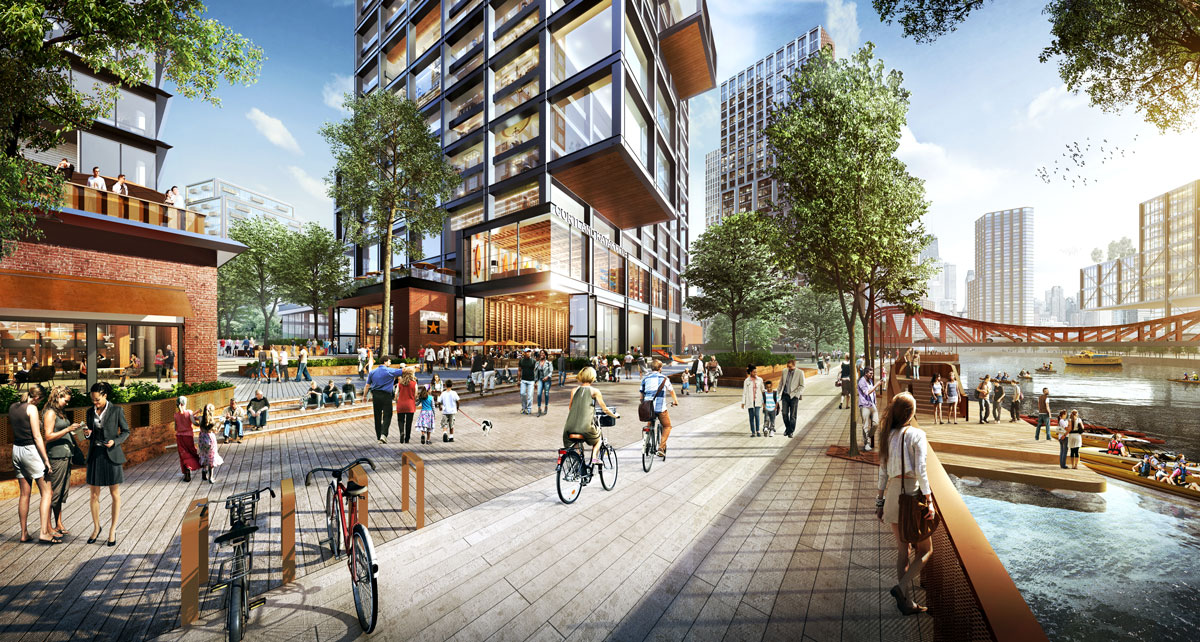
[Rendering: Courtesy of SOM/Sterling Bay]
gb&d: What is the mission behind the Lincoln Yards development?
Cabonargi: Lincoln Yards is where Chicago connects. We hope to develop a new vibrant, mixed-use community and civic spaces that are known globally and loved locally.
gb&d: What were your biggest priorities going into designing this space?
Cabonargi: Our biggest priority is to design a place that inspires all who live, work and visit Lincoln Yards. We have prioritized mobility and the connection of former industrial sites to adjacent neighborhoods and neighborhoods, once separated by rail, highway, and industry, to one another. We plan to transform the riverfront for the enjoyment and use of everyone and develop places that attract and engage everyone.
gb&d: What aspect of the project are you most excited about?
Cabonargi: Our team is excited by the transformation of the riverfront, the implementation of new public space, and the reconnection of neighborhoods.
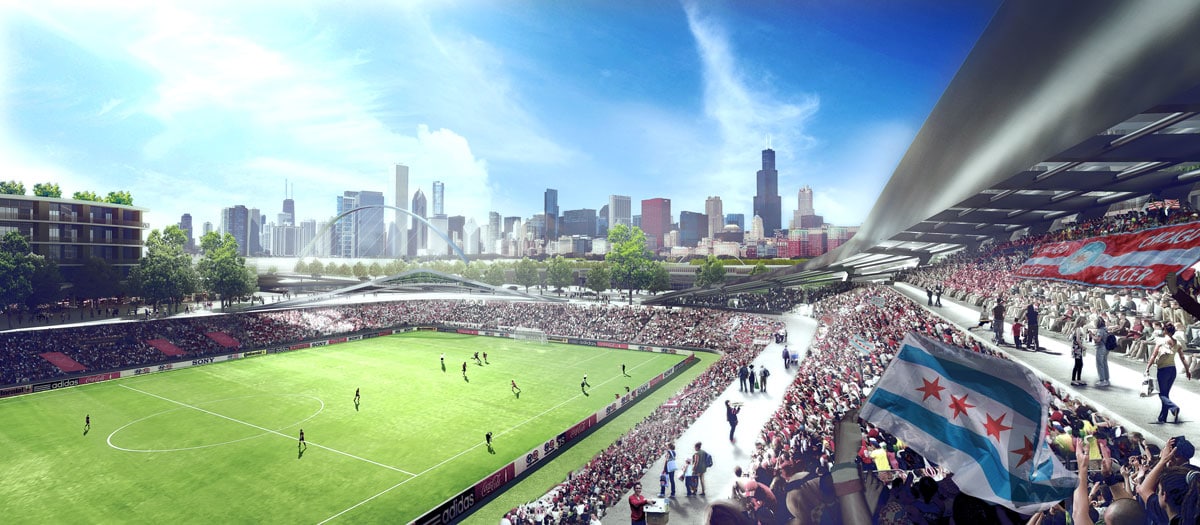
[Rendering: Courtesy of SOM/Sterling Bay]
gb&d: How is environmental sustainability incorporated into the design?
Cabonargi: Sustainability, both economic and environmental sustainability, is at the forefront of every design decision. We have emphasized the importance of public transit, walkability, wellness, and open space. We intend to seek LEED ND (LEED for Neighborhood Development) certification and are exploring the implementation of river water cooling, geothermal well fields, renewable energy, and energy-efficient building design.
gb&d: What is this project’s biggest challenge?
Cabonargi: The biggest challenges are the need for mitigation of existing traffic congestion and balancing our desire for lots of open space with the density required to fund it.
gb&d: What are some of the proposed infrastructure improvements?
Cabonargi: In addition to overall improved roadways and neighborhood connectivity, proposed infrastructure improvements include three new water taxi stations, short- and long-term Metra station improvements, 4,000 feet of new roadway, more than 6,200 parking spaces, improved Chicago Transit Authority infrastructure, and new bridges to connect pedestrians, bikes, transit, and vehicles across the river.
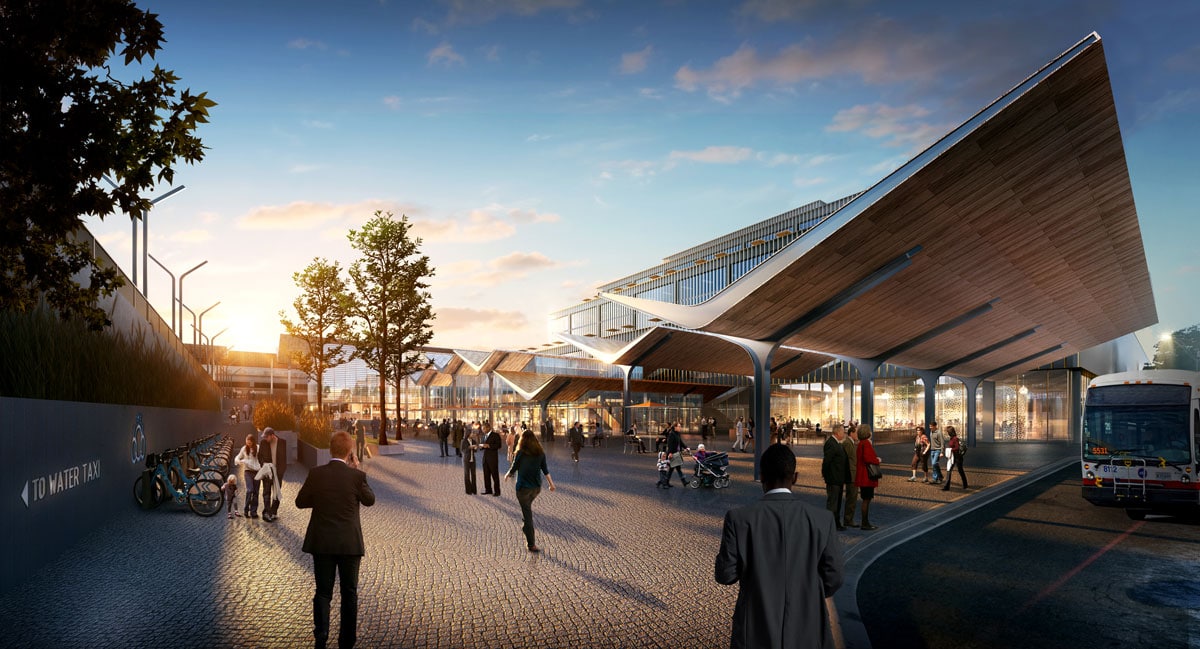
[Rendering: Courtesy of SOM/Sterling Bay]
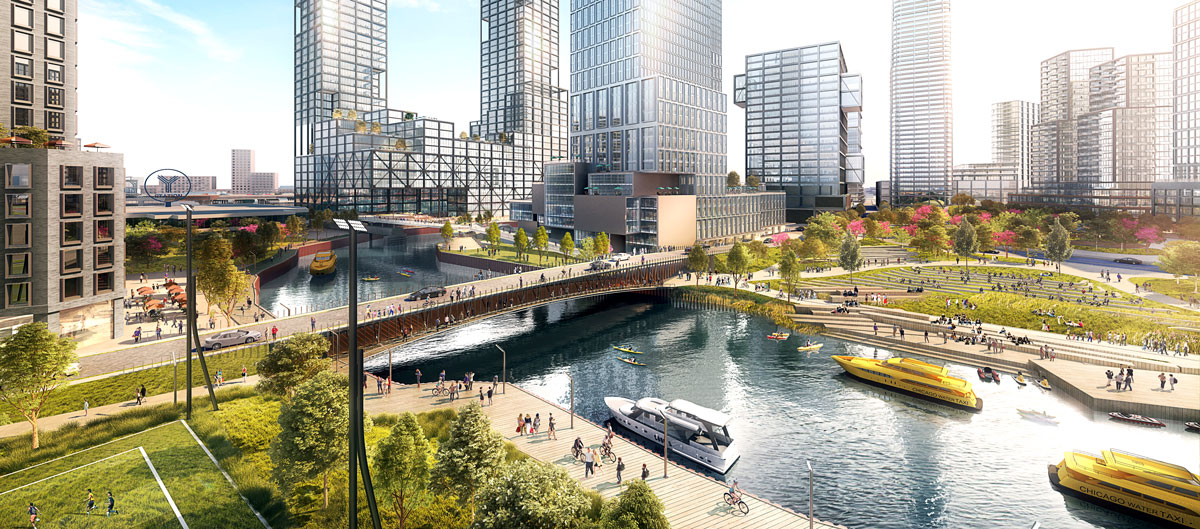
[Rendering: Courtesy of SOM/Sterling Bay]
gb&d: What is most surprising about this development?
Cabonargi: We are re-imagining infrastructure and redefining our expectations to impact areas well outside of our land holding. We hope to inspire creative transit and connectivity solutions including a new multi-modal center anchored by a Metra station, the extension of the 606 (the 2.7-mile multi-use recreational trail and park) to the river and beyond, and by transforming DOT marshaling yards into vibrant play spaces in the form of a skate park and climbing wall.
gb&d: How can architects, planners, and developers create urban spaces that serve their communities?
Cabonargi: Architects, planners, and developers can create urban places that best serve surrounding communities through engagement that helps to shape and inform the built environment in a manner that is vibrant, porous, and welcoming.
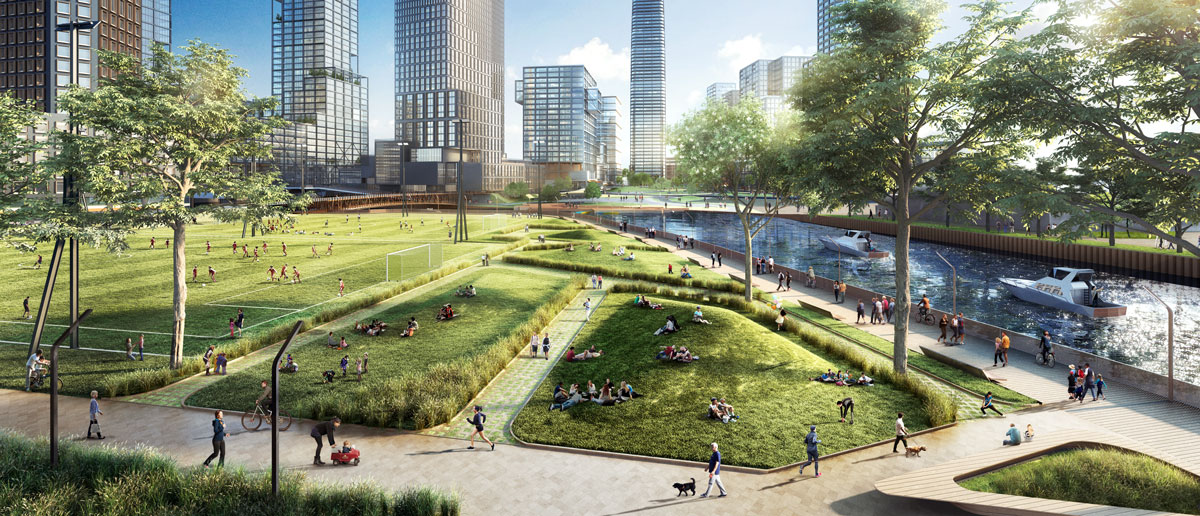
[Rendering: Courtesy of SOM/Sterling Bay]
By the Numbers
- 1+ Mile of improved existing roadway
- 4000 Feet of new roadway
- 3 New water taxi stations
- 1 Mile of new Riverwalk
- 13,000+ Feet of 606 trail extension
- 13+ Acres of new public open space
